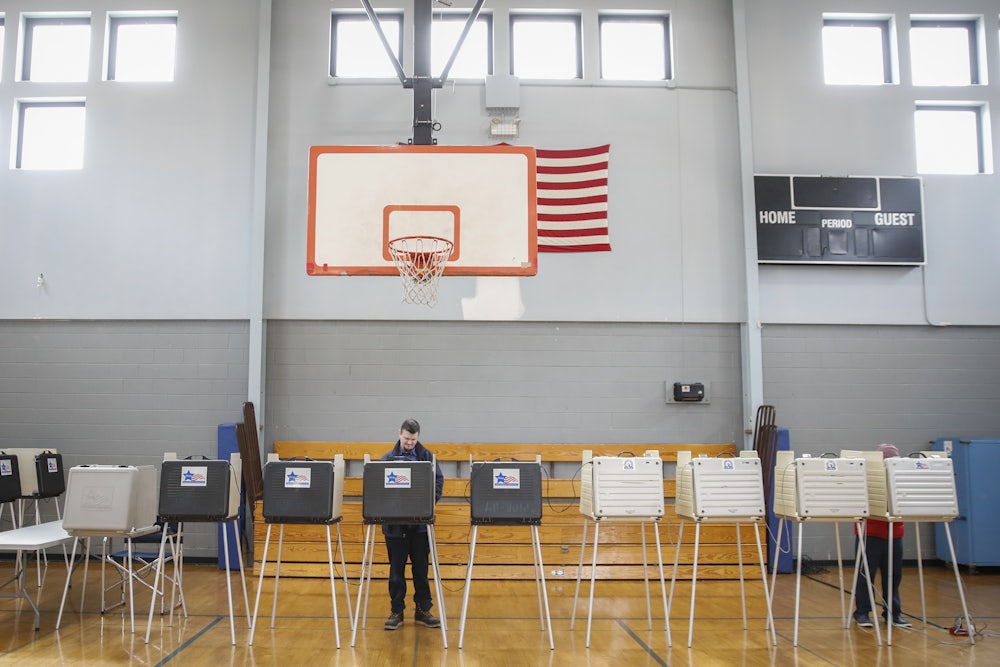Nothing captures the imagination of the political press like the all-important, quasi-talismanic “swing voter.” And so, with the 2020 presidential election now a mere 18 months away, the electorate is already being fed a steady diet of punditry carefully repeating—as if it were a mantra—why… Democrats… must… win… swing… voters… to beat Donald Trump.
On the 2020 presidential campaign trail, former Vice President Joe Biden gave his first speech as an official candidate, attempting to appeal to frustrated swing voters and contrast himself with President Trump. —NPR
To beat Trump in 2020, the Democratic candidate, whether it’s Sanders or someone else, will need to do a better job of appealing to the concerns of suburban swing voters in this part of Pennsylvania. —CNN
Right now, some prominent Democrats are publicly fretting about nominating a woman in 2020... And some Democrats privately say they are even more concerned that swing voters in the Midwest won’t embrace a black woman [Kamala Harris]. —Fivethirtyeight.com
Just exactly who are these swing voters? That question usually goes unexamined in great detail, but the underlying assumptions are threefold: 1) swing voters are people who vote for candidates of both parties; 2) they mostly live in the suburbs; 3) they are white. Also, it’s generally understood that it’s Democrats, and not so much Republicans, that must work diligently to win over this fickle slice of the electorate—which, if these voters aren’t partisan, shouldn’t really be the case.
Nevertheless, the Democrats’ necessary pursuit of the swingers has become de rigueur in political analysis since at least the early 1980s, when all those “Reagan Democrats” ostensibly sent a conservative California governor to the White House and President Jimmy Carter back to Georgia. Democrats have been lectured on the need to woo them back ever since.
But the fact is, the swing-voter character should have been written out of our election dramas years ago. Like “Rockefeller Republicans” or “Yellow Dog Democrats,” “swing voter” is a persona from a political landscape that simply no longer exists.
Let’s start with those “Reagan Democrats.” Chasing Reagan Democrats is folly because they’re literally dead. The average 45-year-old union worker who pulled the lever for the Gipper in 1980 is, statistics tell us, no longer with us. Whatever logic there was to Bill Clinton and Dick Morris trying to win them over with a diet of crime bills, school uniforms, and welfare reform no longer applies. (It’s interesting that we never hear about “Obama Republicans.” Barack Obama won a higher percentage of the popular vote in 2008 than Ronald Reagan did in 1980, and won states that Bush-Cheney carried in 2004.)
Moving to the suburbs, the supposed home of the swing voter, not to mention all kinds of micro-trendy constituents Democrats have been told to court, such as “Soccer Moms” and “Security Moms.” It turns out that suburbs are no longer particularly politically “independent.” They are now, in fact, mostly Democratic. Designing a strategy to appeal to voters who are maybe moderate, but honestly, mainly marginalized Republicans in areas that now have a plurality of Democrats, seems like a good way to depress Democratic turnout.
It goes without saying that political campaigns should attract as many votes as possible, and that there’s nothing intrinsically wrong with broad-based appeals. It also doesn’t make much tactical sense to go out of your way to alienate or insult certain groups of voters. But the fact is, many of the policy positions that are considered “left wing” by the chattering class—even the “socialist” Green New Deal—actually have majority support. In an environment in which 76 percent of the public wants to raise taxes on the rich, trying to pick off a few center-right votes with a handful of tax credits—the cornerstone of the “centrist” Democratic policy playbook from the 1990s and early 2000s—feels shortsighted, at best, and likely not the best way to mobilize Democratic voters. And mobilizing more Democratic voters is the key to the 2020 election.
In 2016, over 4 million Democrats who voted in 2012 for Barack Obama didn’t show up at the polls to pull the lever for Clinton. It’s not that they voted for someone else; they simply didn’t vote at all. And as a reminder, Trump won three states by a total of 76,000 votes. The reasons for this are many, but the lesson is clear. Rather than obsess about winning back the voters that switched from Obama to Trump, Democrats should instead focus on inspiring those Obama voters who stayed home, who are “mostly young and nonwhite” and “share the progressive policy priorities of Democrats,” argued Sean McElwee, Jesse H. Rhodes, Brian F. Schaffner, and Bernard L. Fraga in the New York Times. Based on their careful analysis of the data, they advise Democrats to forget about those swing voters and figure out “why a campaign [Hillary’s] that sought to energize young voters of color failed to do so.” Here’s hoping the 2020 Democratic nominee gets the message.
